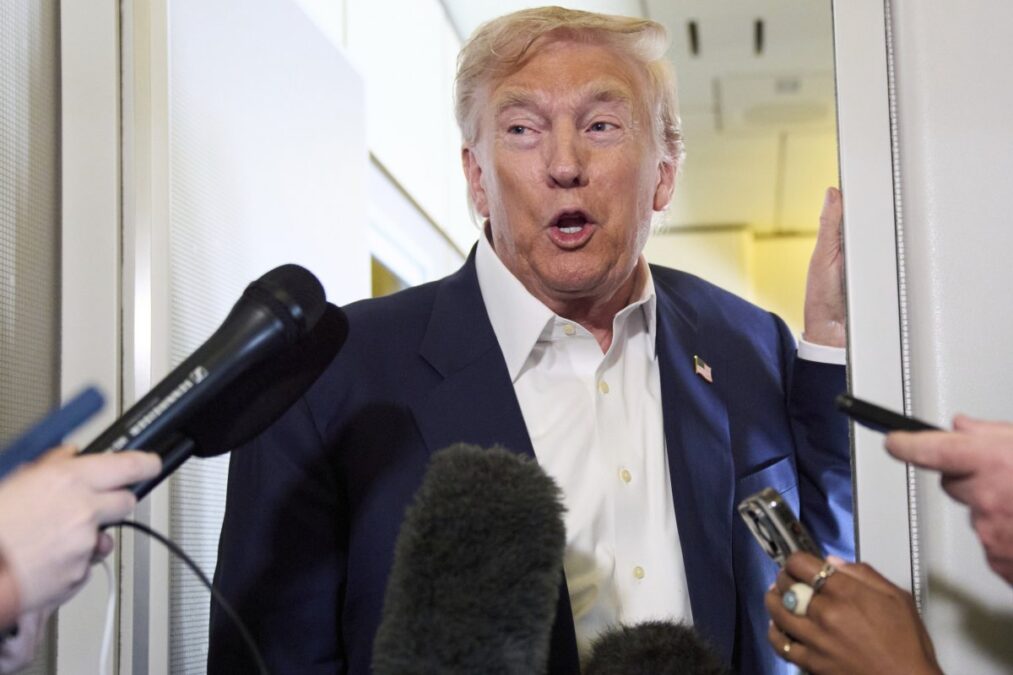Introduction
The Trump Approval Rating of former U.S. President Donald J. Trump has remained one of the most polarizing and scrutinized metrics in modern American politics. Whether you’re a political analyst, a voter, or simply a news consumer, understanding the fluctuations in Trump’s approval ratings offers valuable insight into the shifting tides of American public opinion.
This article delves into the historical trends of Donald Trump’s approval ratings, the factors that influenced them, how they compare to those of other U.S. presidents, and what they mean for the future of American politics. Drawing on data from reputable sources like Gallup, Pew Research Center, and Newsweek, this comprehensive guide provides a detailed, SEO-friendly breakdown of everything you need to know about Trump’s approval ratings.
Understanding Approval Ratings: What Are They and Why Do They Matter?
Approval ratings are a measure of public sentiment toward a sitting or former president, gauged through opinion polls that ask respondents whether they approve or disapprove of the president’s job performance. These ratings are crucial for several reasons:
- Political Accountability: They reflect how the public perceives a leader’s effectiveness and decision-making.
- Election Influence: High approval ratings can bolster a president’s re-election chances, while low ratings can signal vulnerability.
- Policy Impact: Public support can influence the legislative agenda and the president’s ability to push through initiatives.
While approval ratings don’t tell the whole story, they serve as a barometer of a leader’s popularity and political capital.
Donald Trump’s Approval Ratings: A Historical Overview

Trump Approval Rating served as the 45th President of the United States from January 20, 2017, to January 20, 2021. Throughout his presidency, his approval ratings were marked by consistency in polarization and relatively low average approval compared to some of his predecessors.
Inauguration to Midterm Elections (2017–2018)
Trump’s approval ratings began low, with many polls placing him below 50% right after his inauguration. According to Gallup, his initial approval rating was around 45%, which was unusually low for a newly elected president.
Throughout 2017, his approval fluctuated between 37% and 45%. Key events influencing these numbers included:
- The travel ban on predominantly Muslim countries
- The response to the Charlottesville white supremacist rally
- Tax reform efforts
- Natural disaster responses (e.g., Puerto Rico after Hurricane Maria)
By the end of 2018, following the midterm elections where Democrats regained control of the House, Trump’s approval rating hovered around 41%.
2019: Impeachment and Polarization
The first impeachment trial of Donald Trump—stemming from a call with Ukraine’s president—dominated headlines in late 2019. Despite the political drama, Trump’s approval ratings remained largely stable. Gallup reported his approval at 45% in December 2019, showing that the impeachment did not significantly sway public opinion.
This period underscored the deeply partisan nature of Trump’s support base. While his approval among Republicans remained consistently high (often above 85%), his approval among independents and Democrats remained low.
2020: Pandemic, Protests, and Election Year
The year 2020 was pivotal for Trump’s presidency and his approval ratings. The outbreak of the coronavirus pandemic in early 2020 initially caused a slight bump in approval, as is often seen during national crises. However, as the death toll and economic fallout grew, his approval dipped.
By June 2020, amid nationwide protests following the death of George Floyd, Trump’s approval dropped to 40% according to Gallup. His handling of the protests and the use of federal force in cities like Portland and Washington, D.C., further polarized public opinion.
As the election approached in November, Trump’s approval rating settled around 43%—below the critical 50% threshold. His disapproval rating remained high, hovering around 55%.
Post-Presidency (2021–Present)
After losing the 2020 election to Joe Biden, Trump left office with an approval rating of approximately 41% (Gallup, January 2021). In the years since, his approval rating as a former president has remained relatively stable.
According to Pew Research Center data from 2023, Trump’s approval rating among the general public remains around 42%, with strong support from Republicans (over 80%) and very low approval from Democrats (under 10%).
Factors Influencing Trump’s Approval Ratings

Several key factors have influenced Trump’s approval ratings over time:
Partisan Divide
Trump’s presidency was marked by extreme partisan polarization. His approval ratings among Republicans and Republican-leaning independents have consistently remained high—often above 85%. Conversely, his approval among Democrats has rarely exceeded 10%, contributing to a consistently low overall approval rating.
Economic Performance
Despite his low overall approval, Trump often received credit for a strong economy prior to the pandemic. Unemployment rates were historically low, and the stock market reached record highs in 2019. However, the economic downturn in 2020 due to the pandemic and lockdowns offset some of these gains in public perception.
Handling of Crises
Trump’s response to national crises—including the pandemic, wildfires, and racial unrest—significantly affected his approval ratings. Many Americans criticized his leadership during the pandemic, particularly regarding mask mandates, vaccine rollout, and communication strategies.
Media Coverage and Public Statements
Trump’s frequent use of social media, particularly Twitter, and his combative relationship with the press contributed to a polarized media landscape. While some viewed him as a truth-teller who challenged the “fake news” media, others saw his rhetoric as divisive and dangerous.
Cultural and Social Policies
Trump’s immigration policies, including the travel ban and the separation of families at the border, were particularly controversial and negatively impacted his approval ratings among moderate and independent voters.
How Trump’s Approval Ratings Compare to Other Presidents
To put Trump’s approval ratings in context, it’s useful to compare them to those of recent U.S. presidents:
| President | First Year Avg. Approval | Final Approval | Avg. Approval | Key Events |
|---|---|---|---|---|
| Barack Obama | 67% | 59% | 53% | Economic recovery, Affordable Care Act |
| George W. Bush | 57% | 34% | 49% | 9/11, Iraq War, financial crisis |
| Bill Clinton | 55% | 66% | 55% | Impeachment, economic boom |
| George H.W. Bush | 74% | 59% | 67% | Gulf War |
| Donald Trump | 45% | 41% | 43% | Pandemic, impeachment, protests |
Trump’s approval ratings were among the lowest for any modern president. His average approval rating of 43% is significantly lower than the historical average of around 55%.
The Role of Newsweek in Covering Trump’s Approval Ratings
Newsweek, a prominent news outlet with a long history of political coverage, has consistently tracked and reported on Trump’s approval ratings. The magazine provides in-depth analysis, expert commentary, and real-time polling data to help readers understand the political climate.
Newsweek’s coverage often highlights:
- Polling Trends: Analysis of how different demographics view Trump.
- Comparative Analysis: How Trump’s approval compares to other leaders.
- Expert Commentary: Insights from political scientists, historians, and journalists.
In recent articles, Newsweek has noted that Trump maintains a strong base of support despite his low overall approval, a trend that has implications for the 2024 presidential election.
Implications for the 2024 Election
As of 2024, Donald Trump is once again a leading contender for the Republican nomination. His consistent support within the GOP, despite his low overall approval, suggests that he remains a formidable candidate.
However, Trump’s historically low approval ratings among the general public could pose a challenge in a general election. To win, he would need to either expand his base or sway undecided voters—a difficult task in an increasingly polarized electorate.
Key battlegrounds in the 2024 election will likely include:
- Suburban voters
- Independent voters
- Swing states like Pennsylvania, Michigan, and Arizona
How Trump’s approval rating evolves in the coming months will be a key indicator of his electoral prospects.
Conclusion: The Legacy of Trump’s Approval Ratings
Donald Trump’s approval ratings reflect a presidency defined by division, resilience, and deep partisan loyalty. While his overall approval has remained below 50% for most of his political career, his ability to maintain a strong and loyal base within the Republican Party has made him a dominant force in American politics.
As the 2024 election approaches, all eyes will be on Trump’s approval ratings to gauge his strength as a candidate. Whether his support continues to hold firm or begins to waver will have major implications for the future of both the Republican Party and the United States.
Frequently Asked Questions (FAQs)
Q: What is Donald Trump’s current approval rating?
A: As of 2024, Trump’s approval rating hovers around 42%, with strong support from Republicans and very low approval from Democrats.
Q: Why is Trump’s approval rating so polarized?
A: Trump’s approval rating is polarized due to deep partisan divides. His policies, rhetoric, and media presence have energized his base while alienating many others.
Q: How does Trump’s approval compare to Biden’s?
A: Trump and Biden have similar approval ratings, with both hovering around 40–43%. Both presidents face significant disapproval from the opposing party.
Q: Can Trump win the 2024 election with a low approval rating?
A: Yes, if he secures the Republican nomination and performs well in key swing states. Electoral success often depends more on turnout and base enthusiasm than overall approval.
Q: Where can I find real-time updates on Trump’s approval ratings?
A: Reputable sources like Gallup, Pew Research Center, and Newsweek provide regular updates and analysis.
Final Thoughts
Donald Trump’s approval ratings are more than just numbers—they are a reflection of the cultural, political, and social dynamics shaping modern America. Whether you love him or loathe him, there’s no denying that Trump has left a lasting impact on the political landscape. As the nation moves toward another pivotal election, understanding his approval ratings will remain essential for anyone interested in the future of U.S. politics.



